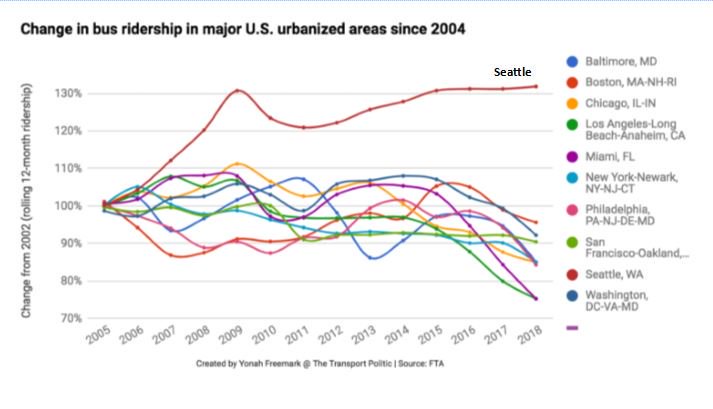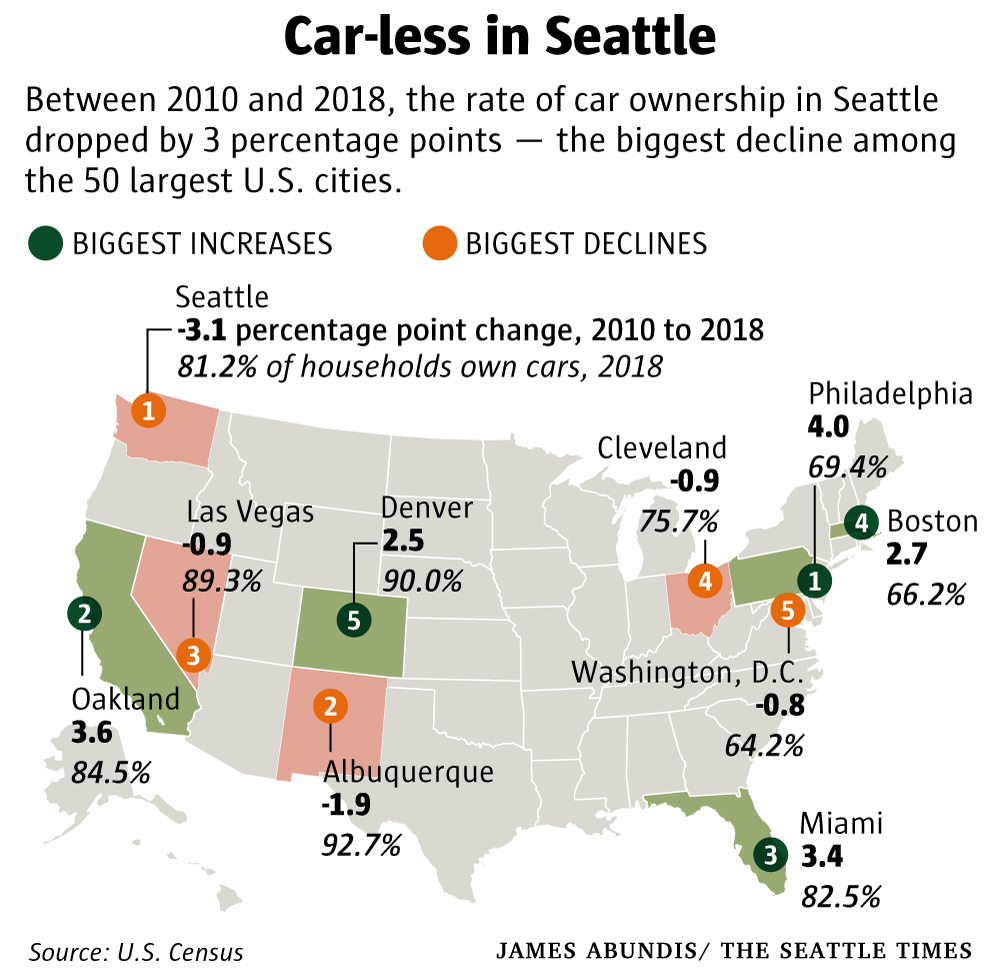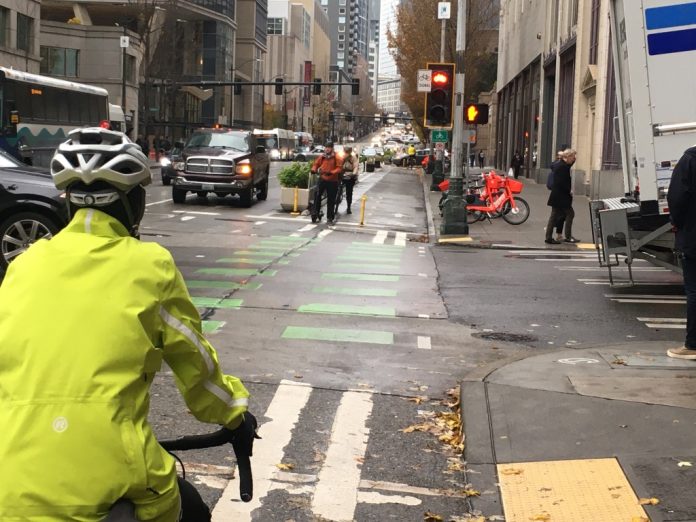Last Saturday Gene Balk, The Seattle Times FYI Guy, wrote a column describing how the latest data from the Census showed that car ownership in Seattle has dropped by 3% since 2010. 81% of households own at least one vehicle, the latest Census data showed. While this drop may not seem like much, it was by far the biggest drop in car ownership among large cities and only 11 of the largest 50 cities had any drops at all. Interestingly, for people under the age of 35 or over 65, only 75% own cars. I suspect the rate changes as well when race and class are added to the analysis.
This drop in car ownership represents a victory for the urbanist vision and proof that our region’s investments in transit, walking, and biking are providing people mobility options beyond cars. Moreover, it should be a reminder to support candidates who unequivocally support more transit, biking, and pedestrian infrastructure. There are candidates out there with bad transportation policies propped up by profuse corporate spending. Don’t fall for their Siren songs. And speaking of frauds, there’s Tim Eyman and his terrible Initiative 976 stripping transportation funding statewide. That would surely jeopardize our progress and put us on the defensive. Vote no on I-976.
But back to the good news on lowering car ownership rates: it’s also a validation of our region’s strategy of concentrating growth into dense transit rich neighborhoods. Not only does new housing in our central city put more people in proximity to the biggest employment center in the state, it also created space for new grocery stores, hair salons, and restaurants for existing residents, allowing them to meet more of their needs within their neighborhood.

It should be noted that the total number of cars in our city stayed constant, which is a victory of another degree. We are in a climate crisis and we need an absolute reduction in carbon emissions, not a slowing of the growth in output. Each car represents additional emissions, so this is all good news. We’ve also led the nation in transit ridership growth over recent years–which helps explain the drop in car ownership.

While clearly the drop in car ownership has mostly to do with our city’s investments in transit and the massive amounts of new housing being built, this reporting comes on the heels of several data points showing that biking is up in our city. 2018 Census data showed that more people are biking in our city than ever before. This data is especially encouraging as it shows that last year’s reported drop in cycling was a bit of statistical noise in what is an overall positive growth curve. The same survey also shows an increase in people walking and taking transit. Also worth noting is that many of the groups that touted the last year’s report as proof that biking, along with Seattle, is dying and that we should stop investing in bike infrastructure are silent this time around.
And if a broad survey like the census is not enough, data from bike counters such as the Fremont Bridge, which cracked 1,000,000 bike trips for year–well exceeding the pace in 2018–provide more on-the-ground evidence that people are choosing two wheels to traverse our city. The event was celebrated by a group of folks from Seattle Neighborhood Greenways and Cascade Bicycle Club, and in tweet form by Seattle Department of Transportation (SDOT) City Traffic Engineer Dongho Chang:

The growth in biking could be due to multiple factors. It could be the city’s investment in new all ages and abilities bike connections such as the new Pike Street protected bike lane are making more people feel safe riding on our streets. It could be the proliferation of more affordable e-bikes, including abundant bikeshare bikes, have taken the bite out of our hills. It could be the growing threat of climate apocalypse is compelling more people to choose climate-friendly options.
While all three are surely contributors, evidence from other city’s such as Vancouver to the north suggest that providing people a safe, connected network is a key driving of ridership. Studies have shown there is a large segment of the population that want to ride, but does not feel safe riding with traffic. As SDOT continues to expand our bike network, including the new Southend connections and Bell Street upgrades expected to be built this winter, we can expect to see continued growth in people choosing to ride bikes.
Hopefully we will continue to see such growth as even more parts of our city are connected by protected bike lanes, including hopefully along Eastlake Avenue, Martin Luther King Jr Way, and through SoDo. It won’t happen by accident. Make sure you advocate and vote for the future Seattle you want to live in.
Patrick grew up across the Puget Sound from Seattle and used to skip school to come hang out in the city. He is an designer at a small architecture firm with a strong focus on urban infill housing. He is passionate about design, housing affordability, biking, and what makes cities so magical. He works to advocate for abundant and diverse housing options and for a city that is a joy for people on bikes and foot. He and his family live in the Othello neighborhood.



